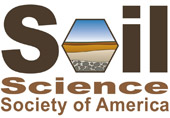Effect of Field Margin Management and Slope on Sediment Trapping during the Monsoon Season in South Korea.
See more from this Division: OralSee more from this Session: Biodiversity and Ecological Sustainability 3C
Fifteen Astroturf mats (34 cm by 25 cm) were installed at twelve sites in Haean catchment, South Korea, arranged in three levels before, within, and after the field margin, with five mats at each level. All sites had radish crops on the upslope field. The total of 180 mats were installed in May 2013 and monitored regularly after each rain event until the end of the monsoon season.
Preliminary results confirm the expected positive relation between rainfall amount and sediment deposition. There was a little difference in the amount of trapped sediment before field margins in the four cases (18.54 ± 0.29 g/cm2 in natural/flat, 18.52 ± 0.55 g/cm2 in natural/steep, 18.70 ± 0.72 g/cm2 in managed/flat, 17.40 ± 0.40 g/cm2 in managed/steep).
In natural field margins, most of the sediment was trapped within the field margin (20.15 ± 1.31 g/cm2 and 24.05 ± 0.81 g/cm2 for flat and steep slopes, respectively); after the field margin, only 11.75 ± 1.00 g/cm2 and 12.76 ± 0.88 g/cm2 were trapped. In contrast, in managed field margins, most of the sediment was only trapped after the field margin (20.50 ± 1.81 g/cm2 and 22.31 ± 1.08 g/cm2 for flat and steep slopes, respectively). Within managed field margins, more sediment was trapped in shallow (19.46 ± 1.15 g/cm2) than in steep slopes (11.44 ± 0.90 g/cm2).
In a next step we will incorporate soil and vegetation data into the analysis for a broader picture on the effect of management and slope on sediment trapping in field margins.
See more from this Session: Biodiversity and Ecological Sustainability 3C
